Crocodiles are among the largest and most fearsome reptiles on Earth, known for their immense size and powerful hunting abilities. These incredible creatures have adapted to a variety of environments, from freshwater rivers and lakes to coastal estuaries and swamps. While many species vary in size, some of the largest ones can grow to astounding lengths and weights, making them dominant predators in their ecosystems. In this article, we explore some of the largest crocodiles in the world, highlighting their impressive dimensions and unique characteristics.
Freshwater Crocodile (Crocodylus johnstoni)
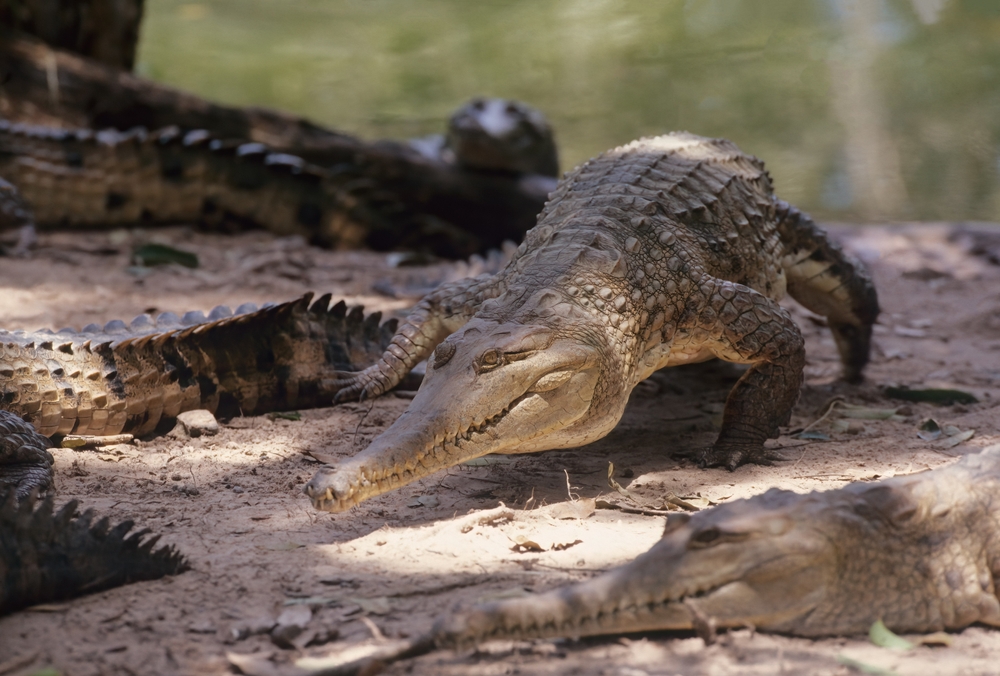
The freshwater crocodile, also known as the Australian freshwater crocodile, is much smaller than its saltwater counterpart, with males reaching a maximum length of around 10 feet and weighing up to 220 pounds. This species is native to northern Australia, where it inhabits freshwater rivers, lakes, and billabongs. They have a slender snout and sharp teeth, which are ideal for catching fish, their primary diet. Unlike saltwater crocodiles, freshwater crocodiles are not considered dangerous to humans, although they will defend themselves if provoked. These crocodiles are known for their agility in water and can swim at impressive speeds. They play an important role in their ecosystems by controlling fish populations and serving as prey for larger predators. They are one of the few crocodile species whose populations are not currently threatened, thanks to the protection of their natural habitats.
Philippine Crocodile (Crocodylus mindorensis)
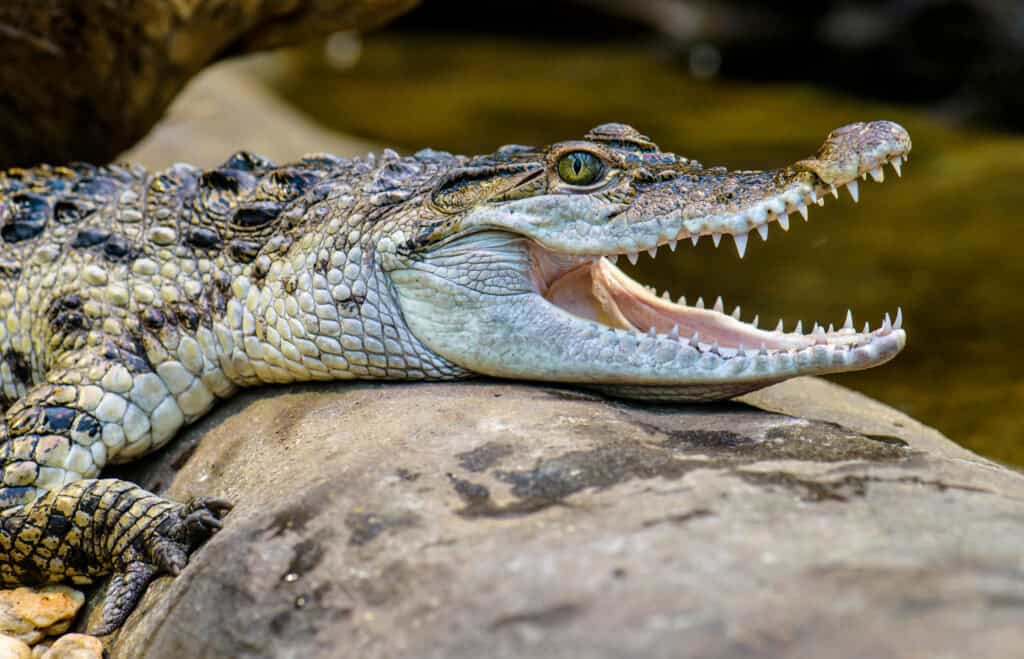
The Philippine crocodile, endemic to the Philippines, is one of the most endangered crocodile species, with males reaching lengths of up to 10 feet and weighing around 440 pounds. This species primarily inhabits freshwater rivers, lakes, and marshes, feeding on fish, small mammals, and amphibians. Due to habitat destruction, hunting, and accidental capture in fishing nets, their crocodile population has dwindled to only a few hundred individuals in the wild. Conservation efforts, including breeding programs and habitat protection, have been initiated to save this critically endangered species. It is known for its golden-brown color, which helps it blend into its natural surroundings. Unlike the more aggressive saltwater crocodile, the Philippine crocodile is relatively shy and reclusive. Recent discoveries have highlighted its adaptability to different habitats, including man-made wetlands.
Morelet’s Crocodile (Crocodylus moreletii)
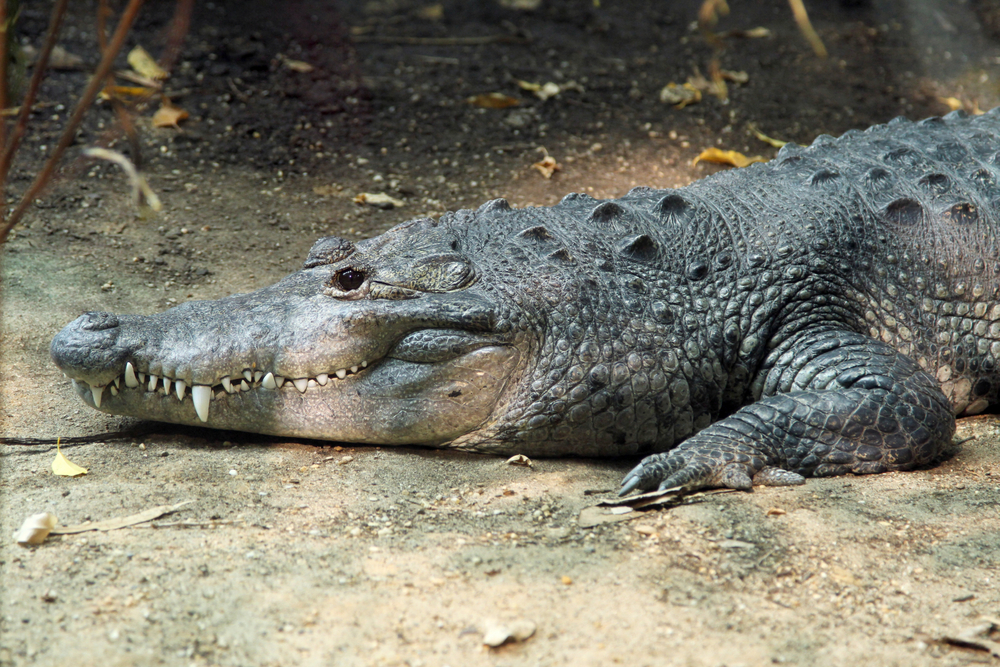
Morelet’s crocodile is a medium-sized species native to freshwater habitats in Mexico, Belize, and Guatemala. Males can grow up to 10 feet in length and weigh around 450 pounds. This species is known for its dark gray or brownish skin, with irregular dark bands and spots. Morelet’s crocodile inhabits swamps, rivers, and lakes and is a generalist predator, feeding on fish, birds, and small mammals. Due to overhunting for their valuable skin, their crocodile populations declined sharply in the 20th century. However, successful conservation efforts have led to a significant recovery in recent decades, and the species is no longer considered endangered. They are known for their powerful bite force, which allows them to take down larger prey. They are also highly territorial and will aggressively defend their nests during the breeding season.
Gharial (Gavialis gangeticus)
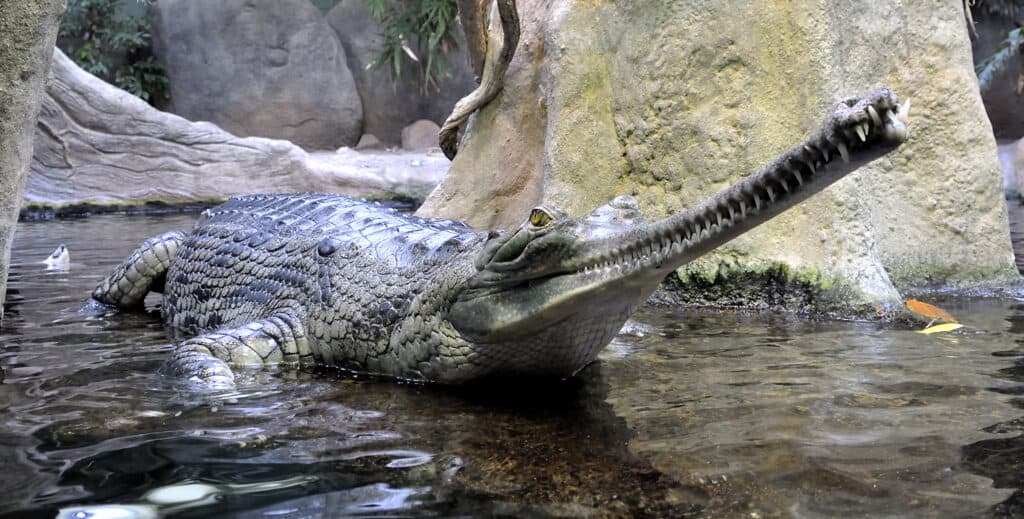
The gharial, with its distinctive long, narrow snout, is one of the largest and most unique crocodilians, growing up to 20 feet long and weighing around 550 pounds. Found primarily in the rivers of northern India and Nepal, it is critically endangered due to habitat destruction and declining fish populations. Unlike other crocodiles, the gharial’s diet consists almost entirely of fish, using its specialized snout and sharp teeth to catch prey with remarkable speed. They are excellent swimmers, spending most of their lives in deep river waters. They are one of the few crocodile species that pose little threat to humans due to their specialized diet and relatively shy nature. Despite their size, they have weak limbs and are poorly suited for life on land, rarely venturing far from the water. Their populations have been in steady decline for decades, but recent efforts have focused on habitat restoration and protection. Its elongated snout is also used by males for producing vocalizations to attract mates during the breeding season.
Orinoco Crocodile (Crocodylus intermedius)

The Orinoco crocodile, native to the Orinoco River Basin in Venezuela and Colombia, is one of the largest crocodile species, reaching up to 16 feet in length and weighing up to 880 pounds. This critically endangered species is known for its pale coloration and slender snout, which distinguishes it from other large crocodiles. Due to extensive hunting for their valuable skin, their populations have dwindled, with only a few hundred individuals remaining in the wild. They primarily feed on fish but are also known to prey on birds and small mammals. They prefer freshwater habitats, particularly rivers, lakes, and savannas during the dry season. They are among the fastest-growing in captivity, with juveniles capable of doubling their size within a year. They also have a relatively low reproductive rate, making their population recovery even more challenging.
Mugger Crocodile (Crocodylus palustris)
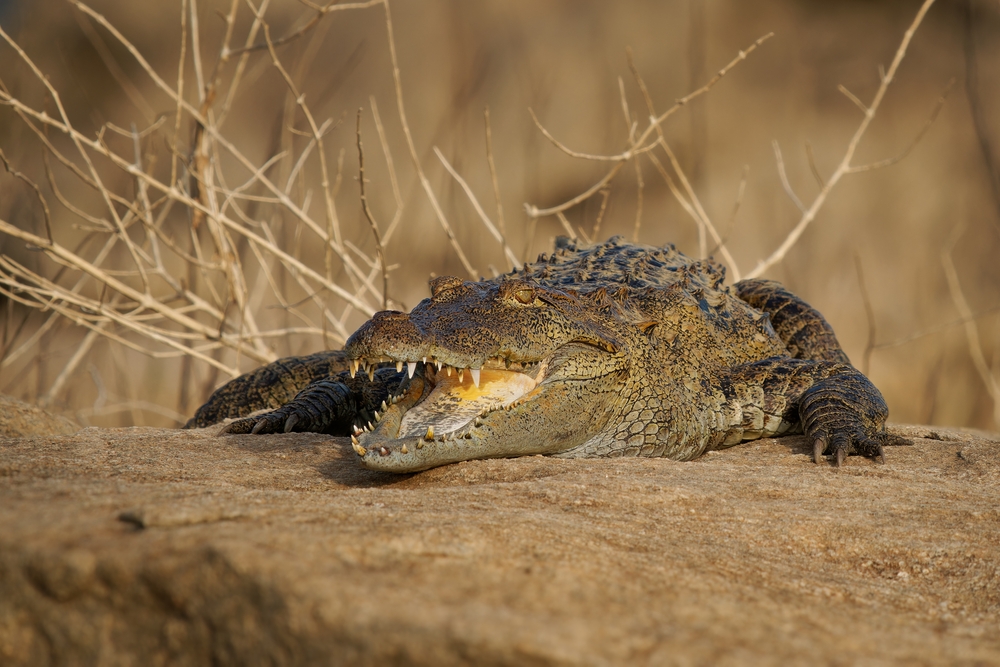
The mugger crocodile, also known as the Indian crocodile, is primarily found in freshwater habitats such as rivers, lakes, and marshes across the Indian subcontinent. Males typically reach lengths of 13 to 16 feet and can weigh up to 1,000 pounds. This species is known for its broad snout and highly territorial behavior, especially during the mating season. They are skilled hunters, feeding on fish, reptiles, birds, and small mammals. They are well adapted to terrestrial life and are often seen basking on riverbanks or digging burrows during dry periods. They play a significant role in their ecosystems by regulating the population of prey species and maintaining the health of their aquatic environments. In recent years, conservation programs have been successful in stabilizing their populations in certain regions.
American Crocodile (Crocodylus acutus)
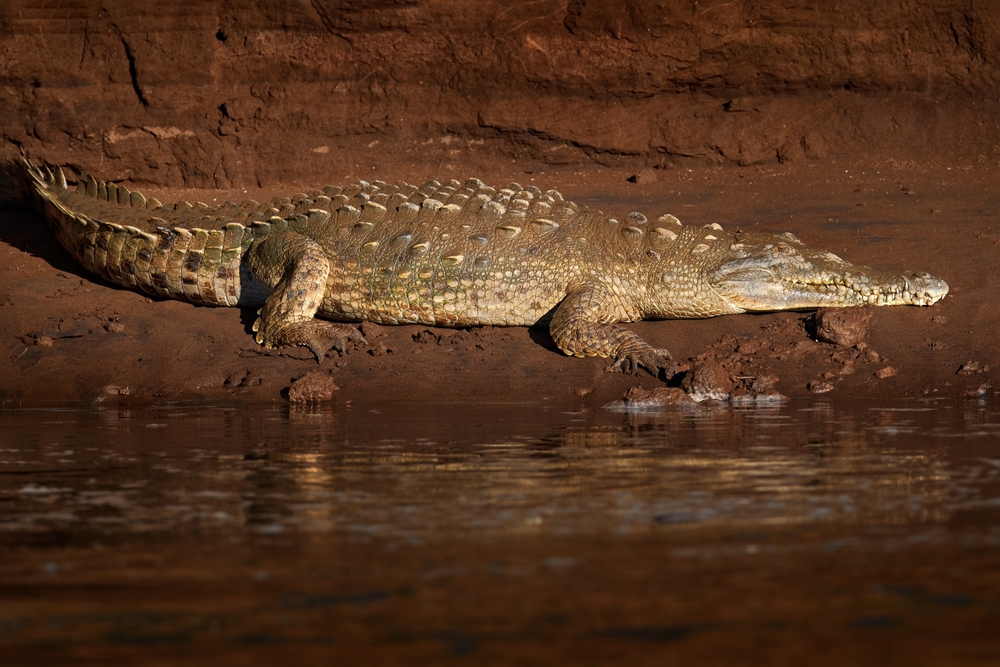
The American crocodile is found in coastal regions ranging from South Florida and Mexico to Central and South America. Adult males can reach lengths of 13 to 16 feet and weigh up to 1,100 pounds. This species has a narrower snout compared to other large crocodiles, making it easily distinguishable. They inhabit saltwater and brackish environments, such as estuaries, lagoons, and mangrove swamps. Their diet mainly consists of fish, birds, small mammals, and crustaceans. Unlike the more aggressive saltwater and Nile crocodiles, American crocodiles tend to be shy and reclusive, avoiding human contact when possible. Despite this, habitat loss and illegal hunting have led to their population decline. Recent conservation efforts have led to a slight recovery, especially in areas like the Florida Everglades.
Black Caiman (Melanosuchus niger)
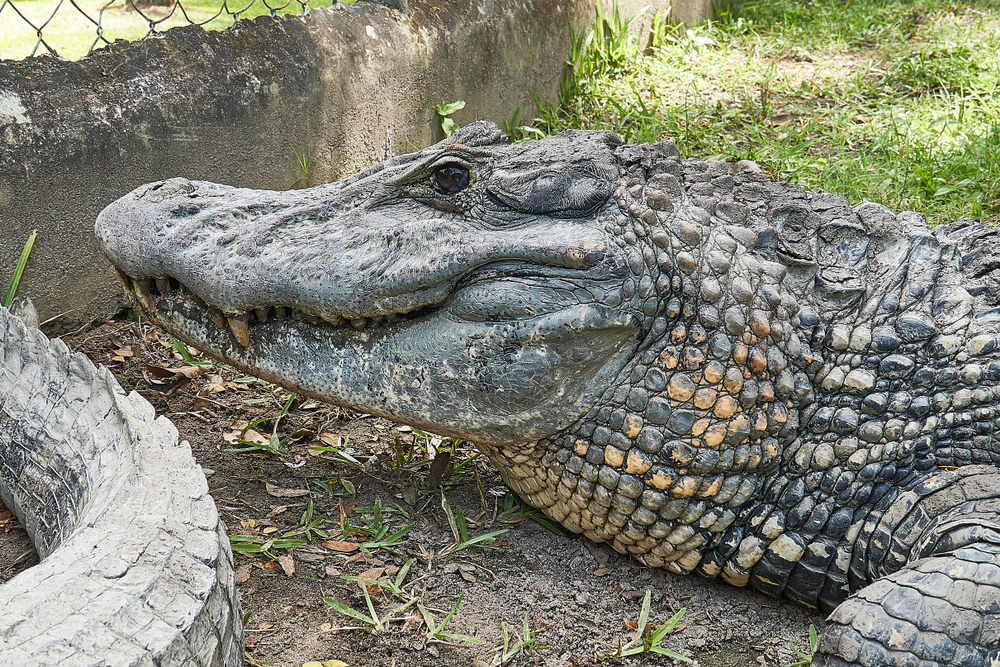
The black caiman is the largest member of the caiman family, reaching lengths of up to 16 feet and weighing over 1,100 pounds. Native to the Amazon Basin, they are apex predators, feeding on fish, birds, and mammals, including large animals like capybaras and deer. They have dark, almost black skin, which provides excellent camouflage in the murky waters of their habitat. They are known for their powerful jaws and aggressive hunting techniques, often ambushing prey at night. Unlike other caiman species, this one has a broader snout and more robust build. They play an essential role in their ecosystems, helping to control prey populations and maintain ecological balance. It is considered near-threatened due to habitat destruction and illegal hunting for its valuable skin.
Nile Crocodile (Crocodylus niloticus)
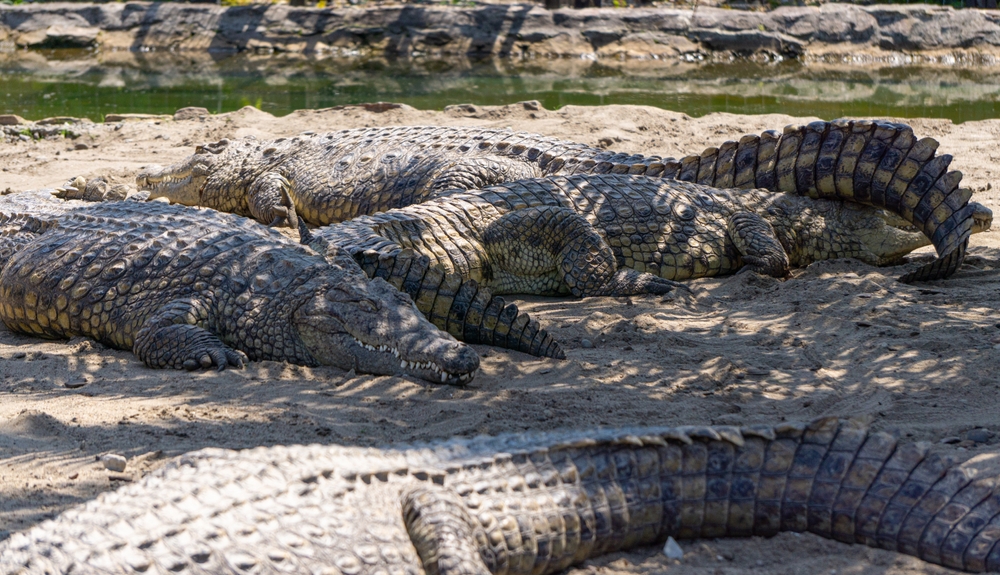
The Nile crocodile is the second-largest crocodile species, with males growing up to 20 feet long and weighing around 1,650 pounds. This species inhabits rivers, lakes, and marshes across sub-Saharan Africa and Madagascar. They are opportunistic hunters, preying on a wide range of animals, from fish and birds to zebras and wildebeest. They are well known for their cooperative hunting strategies, where groups of crocodiles work together to ambush prey. Their muscular bodies and powerful jaws allow them to take down large animals effortlessly. They can live for up to 50 years in the wild, though some individuals have been reported to reach 100 years in captivity. Their skin is highly sought after for the production of luxury goods, which has unfortunately led to illegal poaching in some regions.
Saltwater Crocodile (Crocodylus porosus)
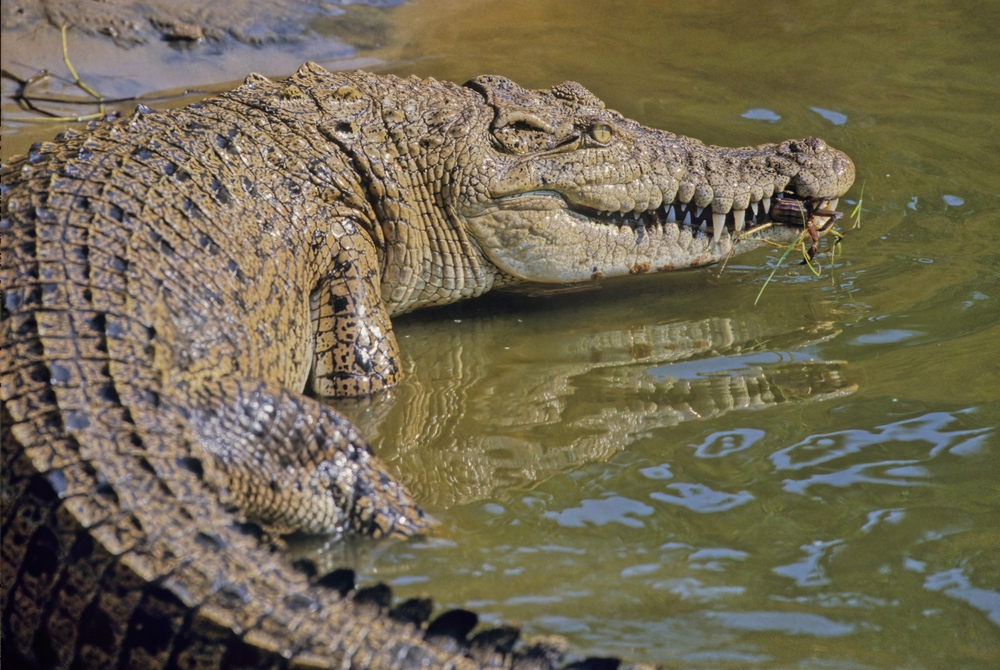
The saltwater crocodile is the largest living reptile, with adult males reaching up to 23 feet in length and weighing as much as 2,200 pounds. Native to brackish and saltwater habitats in Southeast Asia, northern Australia, and the eastern coast of India, this one has earned a reputation for being a powerful predator. These massive creatures are known for their incredible bite force, which can reach over 3,700 psi, making them formidable hunters. They are apex predators, primarily feeding on fish, birds, and mammals, including large animals like water buffalo. Their tough skin is heavily armored, providing protection against potential threats. Females are significantly smaller than males, averaging around 10 feet in length. They are excellent swimmers, often found far out at sea, which is unusual for crocodilian species.
This article originally appeared on Rarest.org.
More from Rarest.org
15 Stunning Big Cats Roaming the World`s Most Beautiful Landscapes
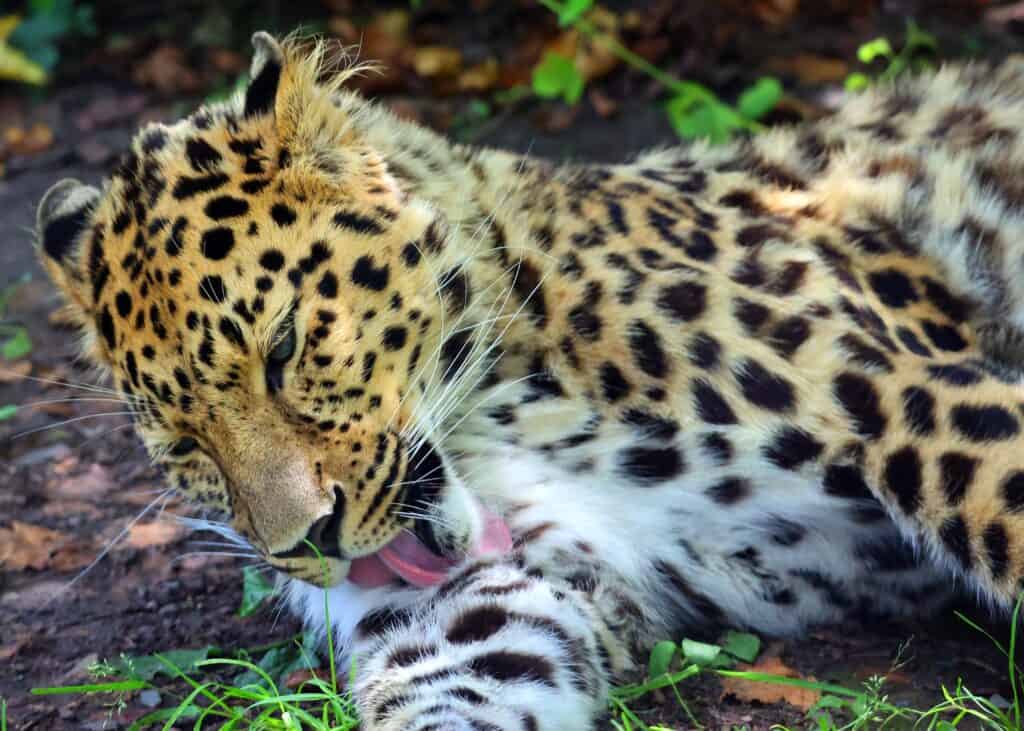
Big cats are some of the most awe-inspiring creatures on the planet, roaming a variety of stunning landscapes across the globe. From the dense rainforests of the Amazon to the snowy peaks of the Himalayas, these majestic predators have adapted to thrive in some of the world’s most beautiful and diverse environments. Read More.
14 Mysterious Lost Civilizations That Still Puzzle Historians
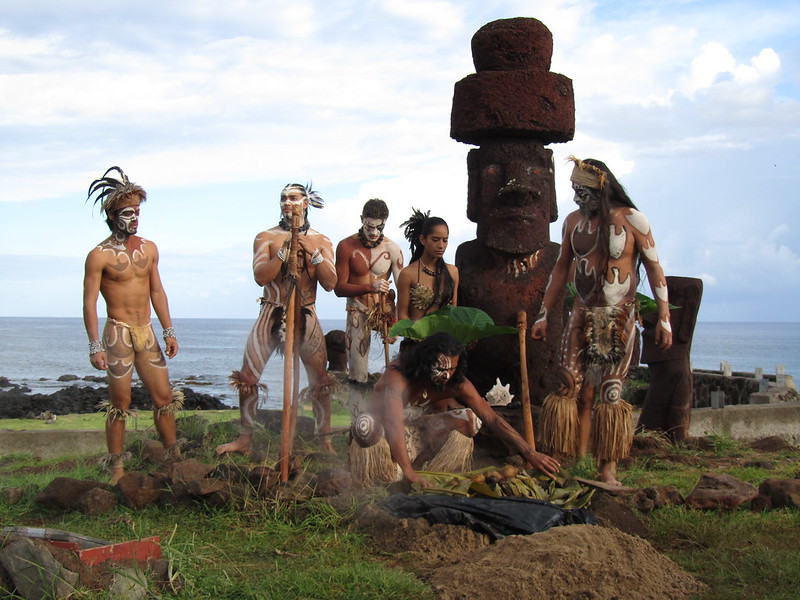
Throughout history, many civilizations have risen to greatness, only to mysteriously vanish, leaving behind ruins and unanswered questions. These lost cultures, once thriving and influential, continue to puzzle historians and archaeologists alike. Read More.
15 Rare and Exotic Amphibians Thriving in Remote Jungles
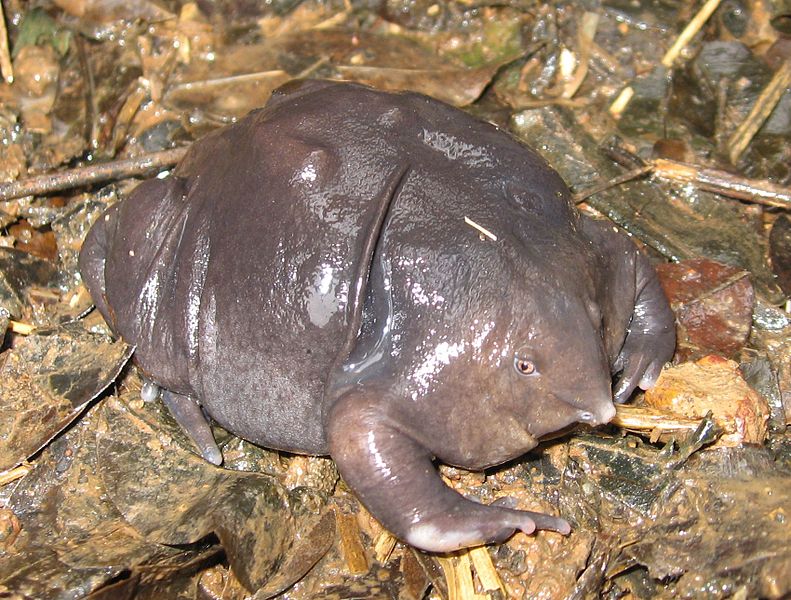
Deep within the world’s most remote jungles, a diverse range of rare and exotic amphibians thrive, often hidden from human view. These remarkable creatures have evolved unique traits to survive in their specific environments, from vibrant colors that ward off predators to extraordinary abilities like gliding or regenerating limbs. Read More.
